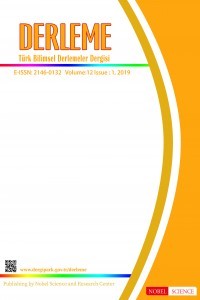Effect of Cadmium on Some Enzymatic Activities and Malondialdehyde (MDA) Levels in Freshwater Fishes
Cadmium, freshwater fish, heavy metal, enzyme activity
- Başlangıç: 2008
- Yayıncı: Nobel Bilim ve Araştırma Merkezi Limited
Significance of Genetic Diversity in Farm Animal Production
Hasan KOYUN, Seyrani KONCAGÜL, Kadir KARAKUŞ
The Importance of Keeping Records in Organic Animal Production
Kadir KARAKUŞ, Hasan KOYUN, Abuzer TAŞ
Status Quo of Quality Roughage Resources in Turkey
Uğur ÖZKAN, Nurdan ŞAHİN DEMİRBAĞ
Effect on Yields of Foot Diseases in Sheep and Cattle Breeding
Abuzer TAŞ, Kadir KARAKUŞ, Hasan KOYUN
An Economic Livestock Activity: Leather Industry
Selçuk Seçkin TUNCER, Turgut AYGÜN, M. Fatih ÇELEN, Kadir KARAKUŞ, Sıddık KESKİN
Su Kanununun AB Su Çerçeve Direktifi Kapsamında Değerlendirilmesi
Interactions Between Heavy Metals and Glucosinolates as Defense Mechanisms in Brassicaceae
Cennet ÖZAY, Özge KILINÇARSLAN, Ramazan MAMMADOV
Toksik Maddelerin Genotoksik Analiz Yöntemleri
Çevre Kirliliğinin Biyoizlenmesinde Balıklarda Genotoksisite Testleri
